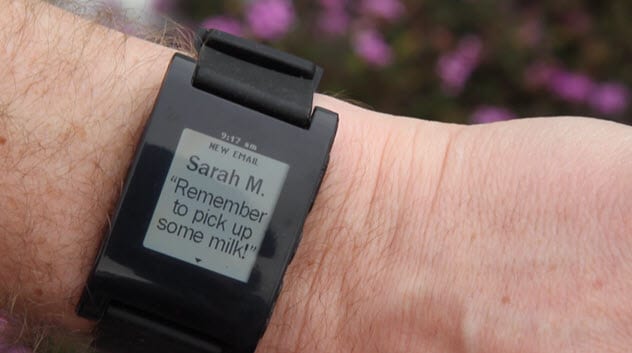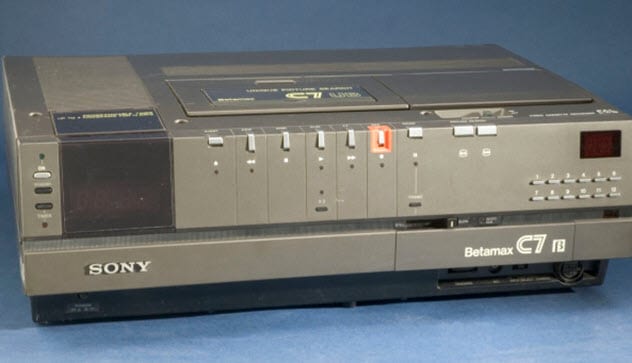 Mysteries
Mysteries  Mysteries
Mysteries  History
History 10 Surprising Stories About the Texas Rangers
 Humans
Humans 10 Philosophers Who Were Driven Mad by Their Own Theories
 Miscellaneous
Miscellaneous 10 Video-Game-Worthy Weapons and Armors from History
 Weird Stuff
Weird Stuff 10 Psychics Who Accurately Predicted Wartime Events
 The Arts
The Arts 10 Pieces of Art Inspired by a Broken Heart
 Health
Health 10 Science Fiction-Sounding New Medical Treatments
 History
History 10 Surprising Facts About the Father of Submarine Warfare
 Space
Space Ten Astonishing New Insights into Alien Worlds
 Weird Stuff
Weird Stuff 10 Bizarre Summer Solstice Rituals Still Practiced Today
 Mysteries
Mysteries Top 10 Haunting Facts About the Ghost Ship MV Alta
 History
History 10 Surprising Stories About the Texas Rangers
 Humans
Humans 10 Philosophers Who Were Driven Mad by Their Own Theories
Who's Behind Listverse?

Jamie Frater
Head Editor
Jamie founded Listverse due to an insatiable desire to share fascinating, obscure, and bizarre facts. He has been a guest speaker on numerous national radio and television stations and is a five time published author.
More About Us Miscellaneous
Miscellaneous 10 Video-Game-Worthy Weapons and Armors from History
 Weird Stuff
Weird Stuff 10 Psychics Who Accurately Predicted Wartime Events
 The Arts
The Arts 10 Pieces of Art Inspired by a Broken Heart
 Health
Health 10 Science Fiction-Sounding New Medical Treatments
 History
History 10 Surprising Facts About the Father of Submarine Warfare
 Space
Space Ten Astonishing New Insights into Alien Worlds
 Weird Stuff
Weird Stuff 10 Bizarre Summer Solstice Rituals Still Practiced Today
Top 10 Successful Inventions That Just Up And Died
When a new gadget or technological marvel is introduced, people often describe it as something that will change the world. Maybe it will transform business, travel, or communications. But one thing’s for sure: It will be around for a long time.
Of course, very little gets that far. Most inventions that start out strong ultimately die out. These 10 brands and inventions were massively successful at first. But once the public’s interest in their novelty died out, these items bit the dust, too.
10 Inventions That People Really Regretted Inventing
10 TiVo

In the dark days before devices like TiVo were introduced, it wasn’t easy to record live television. And just forget about pausing it to go to the bathroom or grab a snack. TiVo changed all that with its introduction of digital video recorder technology, which revolutionized how we watch television.
With a TiVo attached to your TV, you could record multiple channels at once, making it almost impossible to miss a favorite show. Even more impressive, the system made it possible to skip commercials, a feature that everyone appreciated.[1]
TiVo’s branding was so successful that it became a verb. People would say that they “TiVo’d” something to watch later. Unfortunately, it was not to last. As digital technology continued to grow, DVRs became largely unnecessary.
TiVo adapted to the times, albeit slowly, and saw its market share drop considerably. Then, in 2016, Rovi picked up TiVo for a cool $1.1 billion and changed Rovi’s company name to TiVo Corporation.
As the new TiVo Corporation focused on licensing its technology rather than producing hardware, it became an attractive takeover target itself. In 2020, TiVo Corporation completed a $3 billion merger with Xperi Corporation, a firm that specialized in licensing tech and intellectual property. The new company is called Xperi Holding Corporation.
The combined entity will continue to use the TiVo brand for consumer-facing digital entertainment products and services. But not the original TiVo digital video recorder that so many of us knew and loved. That’s a tech dinosaur wiped out by the asteroid of progress.
9 Google Glass

Google Glass debuted with a massive amount of media attention and buzz in 2012. The company’s flashy product demo included skydivers streaming their jumps through the device.
The product was marketed as much for its novelty and exclusivity as for its technology, and the public ate it up. So-called “Glass Explorers” were given a chance to demo a prototype for one month before it was made available to the public. Tech enthusiasts clamored for their set.
Google Glass had an integrated 5-megapixel still/720p video camera. However, that core feature was also a significant problem. Privacy concerns arose when the product first became popular as the device was technically violating existing privacy laws in some areas.
Another major factor in ending Google Glass was its hefty $1,500 price tag. All the fanfare and widespread public interest in the device died out rather quickly. By 2015, Google Glass was effectively dead as a consumer electronic device.[2]
8 Myspace

At one time, almost everyone with an Internet connection had a Myspace page. The social media platform was the first of its kind. From 2005 until 2009, it was the largest in the world and boasted more than 100 million users per month. In 2005, it was purchased by News Corporation for $580 million.
Myspace was as ubiquitous then as Google and Facebook are now, and it was a moneymaking machine. In 2008, the company generated $800 million in revenue. It was valued at $12 billion at its height, making it one of the largest Internet tech companies on the planet. But it wasn’t to last.[3]
Despite being an influential innovator in the realm of social media, Myspace saw a marked decline in users in 2009 and beyond. Facebook came out of nowhere to supplant Myspace as the go-to social media network, and that’s remained true for more than a decade.
Myspace was sold in 2011 to Specific Media Group and Justin Timberlake via a joint purchase for $35 million. The sharp decline in the company’s valuation couldn’t have been more apparent. Technically, Myspace is still around. It does generate ad revenue but far less than at its peak.
7 Pebble

Although many people reading this are probably wearing an Apple or Samsung smartwatch, there’s a chance that someone is wearing a Pebble. Back in 2012, Pebble became the most funded Kickstarter product of all time when its creators raised $10 million on the platform.
At the time, smartwatches were just beginning to surface on the market. Through the Kickstarter campaign, Pebble was able to cultivate a massive following. The influx of money made it possible for the company to innovate its concept further, and backers began receiving their watches in early 2013.
From there, the company launched more watches directly to the public and even initiated another Kickstarter campaign in 2015 that generated $20.3 million. Pebble was making money and looked to solidify its place in the smartwatch marketplace.
By the following year, Pebble was all but gone. Financial issues necessitated the return of funds received via Kickstarter, and everything was shut down by December 2016.
Fitbit purchased the company’s intellectual property, and Pebble is now defunct. Pebble failed due to lack of capital and Apple’s entry into the marketplace, which siphoned off Pebble’s customers even as Apple expanded the market.
But from the ashes of Pebble rose the phoenix of Rebble. Ex-employees, fans, and developers congregated on GitHub to replace the web services formerly provided by Pebble for their smartwatches. Although the original Pebble hardware will eventually die, this motivated coterie of “rebbles” intends to create a RebbleOS to run on a future version of watch hardware.
Rebble’s competitive advantage is unclear at this point. The group’s inspiration, Pebble, was initially meant to compete at a much lower price point than Apple products. Also, as developer Joshua Wise explained:
The Apple Watch . . . and Android Wear wanted you to interact with them, to make them the center of your life. The Pebble wants to not at all be part of your life, up until it does something useful for you, and then it lets you go back to your life.[4]
6 Nintendo Virtual Boy

Nintendo has created some of the world’s most innovative ways to play video games. The company brought back the video game industry following the market crash in the early 1980s, but not everything made by Nintendo is worthwhile. The Wii U, for example, was a massive failure. But it barely registers when compared to the disaster that was the Virtual Boy.
In 1995, Nintendo released one of its strangest, most uncomfortable, and most terribly designed products of all time in the Virtual Boy. The device was marketed as a virtual reality style of gaming, but it wasn’t virtual at all. Instead, it offered stereoscopic 3D glasses, similar to those found in movie theaters, to display 32-bit red graphics.[5]
Players would lean into the head-mounted system and play with the attached controller. The system used a parallax effect to simulate the illusion of depth, but all it really did was give players a pounding headache.
When it was released, the Virtual Boy was touted as an innovation in virtual reality gaming. But the system was terrible. It hit the market in an incomplete state because the company wanted to focus on the Nintendo 64. Only 22 games were made, and the system was canceled within a year.
Top 10 Short-Lived Inventions That Changed The World
5 Napster

People have been illegally copying software ever since it was possible to do so. The same is true of digital music, which rose in popularity during the 1990s thanks to MP3s. People downloaded and shared this music widely on multiple platforms. But the most popular one was Napster.
The company was founded in 1999 and became the primary source for peer-to-peer file sharing online. At its peak, this wildly popular software had around 80 million registered users. Of course, it wasn’t without controversy. Napster became the target of legal concerns when Metallica sued.
The band was followed by Dr. Dre and others, but the publicity only served to increase Napster’s use. Most cases were settled out of court. But one made it through the legal system to nail the platform with hefty fines and an injunction, which caused the company to shut down in 2002.[6]
Once the fines were paid, Napster came back online and eventually sold its assets to Bertelsmann for $85 million. Several years later, Best Buy acquired Napster for $121 million, but the company has since been sold to MelodyVR.
As of 2020, their strategy has shifted away from a direct-to-consumer model. Instead, the new company appears to be delivering music streaming through business partners who may white label the service. Think of it like your grocery store selling products to you under their store name when the goods are actually manufactured by other companies. As of this writing, zombie Napster is doing that with music streaming.
4 MapQuest

Before everyone had a GPS tracker in their pockets, people used an archaic technology known as a paper map to get around. Until the 21st century, most people had a map or two in their cars at all times, but MapQuest changed all that—sort of.
MapQuest went online in 1996, and it offered free mapping services to its customers. People could go to the website, enter their destination, and print out a map with step-by-step instructions on how to get there.
Before MapQuest became popular, a person could only rely on someone else’s directions to find their way or use a road map to determine their route in advance. MapQuest was innovative and widely used. AOL purchased the company in 2000 for $1.1 billion.[7]
By 2008, most people who had previously relied on MapQuest for guidance shifted to using other programs. Google Maps took over the marketplace, and MapQuest mostly disappeared, having been supplanted by GPS tech.
Granted, MapQuest did adapt to GPS. Although the company continues to make a small profit, it’s far short of where it was at the turn of the century.
3 PalmPilot

These days, a cell phone is less a phone and more an incredibly small and powerful computer that happens to make phone calls. Back in the ’90s, however, the concept of a computer in the pocket was considered far-fetched—that is, until the PalmPilot was launched.
In 1996, the original PalmPilot Personal Digital Assistant was released. Consumers marveled at its incredible capabilities, which seem antiquated compared to what’s available today. The original Palms didn’t have backlit screens and were limited by a maximum of 512 KB of RAM and serial communications ports.
Although these devices were comparably archaic, they were technological marvels for the time. The public ate them up. PalmPilots made it possible to organize schedules, send and receive email (eventually), send things to printers, and take notes. So they were highly valued in the world of business.
The company survived into the 21st century, but Palm technology was quickly surpassed by advancements in smartphones. HP acquired Palm in 2010 but destroyed it by 2011.
Then HP sold the Palm trademark to Chinese conglomerate TCL. They’re trying to revive the Palm brand, but it holds little sway in the marketplace as few people are looking to replace their smartphones with a Palm.[8]
2 Betamax

Today, with the push of a button, you can watch almost anything at any time. But it wasn’t always like that. Released in 1975, the first product that let a large number of consumers record and watch programs later was the Betamax.
The following year, JVC’s rival format, VHS, was introduced. Even after that happened, Sony’s Betamax technology was the gold standard in video recording and playback. It revolutionized how people consumed television in the 1970s and early ’80s.
As VHS was a competitor, the legendary “videotape format war” broke out between Sony and JVC to determine which would dominate the marketplace. Betamax had superior recording quality with 250 lines vs. VHS’s 240. But in the end, that didn’t matter. Cost became the most important factor.[9]
Despite being a superior format, Betamax lost the videotape format war simply because the equipment was more expensive. Consumers wanted something more affordable, and that’s what they got in VHS.
Betamax is long since defunct as a recording technology. For a time, though, it was one of the most innovative and important media technologies ever invented since the television. These days, few people under 40 know much about it. But the same could be said of VHS as time goes on.
1 Segway

In 2001, Dean Kamen introduced the world to the Segway, a two-wheeled, self-balancing personal transportation device. The so-called “human transporter” was arguably an incredible invention. It offered a means of commuting within an urban environment in an innovative way.[10]
The Segway became a pop culture icon almost immediately. It was featured in an episode of South Park and many other shows and movies. Steve Jobs once called it “as big a deal as the PC,” which was high praise coming from him. Later, he retracted his statement by saying the Segway “sucked.”
Still, the Segway was a big deal initially. With its recharge time of four to six hours and a top speed of 16 kilometers per hour (10 mph), it was a handy device. Although the public liked the Segway, it was prohibitively expensive, costing around $5,000 or more for a new unit.
Instead of becoming a new mode of transportation for people in the city, Segways became the new way that security personnel got around. There are also Segway tours in many cities. But the product never managed to become the next personal consumer electronic device. Segway was discontinued in 2020.
10 Accidental Inventions That Changed The World
About The Author: Jonathan is a graphic artist, illustrator, and writer. He is a Retired Soldier and enjoys researching and writing about history, science, theology, and many other subjects.








